Bruges charms with cobblestone streets, canals and carillon chimes
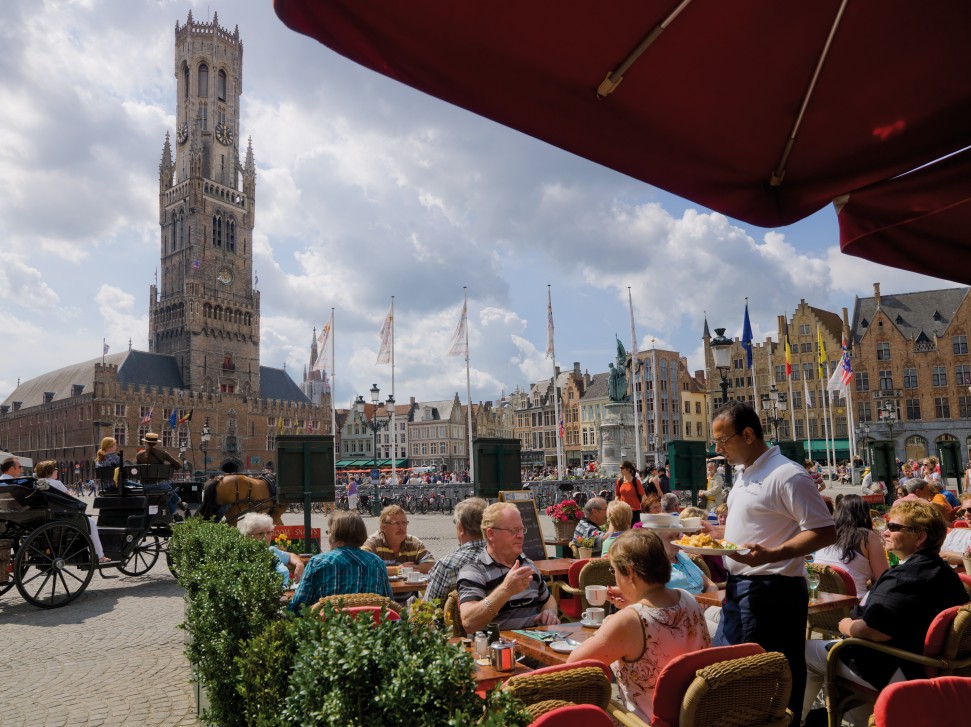
Entering the compact old city centre of Bruges is like travelling back hundreds of years. As I wander around this UNESCO World Heritage Site, the only sound I hear is the clop-clop-clop of hooves on cobblestones echoing off ancient brick walls as high-stepping horses pull four-wheel carriages through narrow streets.
One of the world’s largest financial and trading centres in the 14th century, Bruges is now a major magnet for tourists, nearly 100 kilometres north of the Belgian capital, Brussels.
Built before the advent of motorised transport, these streets were made for walking. With a population of just 120,000, one of Europe’s most beautiful medieval centres retains most of its architecture with a distinctive red-brick gothic style that includes step-gabled buildings like two stepladders leaning against each other and flat, brick facades.

In spring, white swans perform love dances and mating rituals in the many canals and along green banks, as they have done for centuries. The only thing new is the constant passing of tour boats, the city’s modern version of Venice’s vaporettos, each packed with camera-clicking tourists.
The centre of this marvellous old city, the 12th-century Markt (Market Square) is a large, open space that bustles with visitors sunning themselves by a giant statue and arranging city tours on the many waiting horses and carriages parked there. Every table in numerous restaurants lining the square is packed with people savouring the sun and beer, coffee or lunch.

A high point, literally, of a Bruges visit is to climb to its highest point: the 83-metre-high belfry, or Belfort, a turreted bell overlooking the square. It’s a long climb up the 366 steps, some quite steep and narrow, clutching a thick rope or handrail on the way.
At several stops, climbers can rest and learn about the tower, the 47-bell carillon played several times a week, and the role of bells in daily life during the Middle Ages. The top of the tower is quite enclosed, so there is no sense of vertigo, but the view is restricted. Still, visitors can take photos through the protective lattice of the busy square below and the old city spread out beyond.
The tower featured prominently in the 2008 Colin Farrell movie, In Bruges. But the city also has a link to George Clooney’s more recent Monuments Men, regarding the Nazi theft of important works of art during World War II, including the Michelangelo sculpture Madonna and Child from the Church of Our Lady (onthaalkerk-brugge.be).
The impressive church with its 122-metre brick spire, one of the world's highest, is worth the visit especially for the white marble Madonna statue. The only Michelangelo sculpture to leave Italy during the artist’s lifetime, it is a moving piece of quiet beauty, particularly the Madonna’s serene face.

This is just a small part of Bruges’ artistic legacy. The Groeninge Museum’s Low Country remarkable collection of work from the 15th to 20th centuries, especially the Flemish Primitives, feature paintings from then-new techniques that allowed artists to produce highly accurate, detailed representations of people, jewellery, costumes, landscapes and building interiors.
After appreciating the Flemish Masters, I move on to admire more contemporary, light-hearted examples of Bruges art at Kasper Keramiek (keramiekkasper.be), a ceramics workshop and store on Wijngaardstraat. The humorous, bizarre and sometimes bawdy handmade tiles and quirky little figurines are a different popular art form.
Many of the figurines depict professions such as photographers, window washers, dentists, professors, masseurs, bakers and even an acupuncturist with hundreds of sewing pins bristling from a patient’s back. Proprietor Kasper tells me he has depicted 36 medical professions, and that he can make a special order with the face of the subject.
Just down the street, a small café offers a national dish – Belgian waffles. I sample a mid-morning breakfast of a crispy waffle heaped with fresh strawberries and a huge dollop of whipped cream. Delicious but there goes the diet.
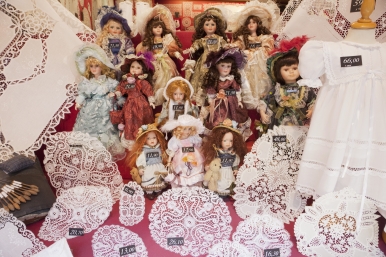
Numerous tapestry, lace and especially chocolate shops line Bruges’ streets selling the region’s specialities. Stores display chocolate in many forms, including seasonal shapes (Easter Bunnies and Santa Clauses), swans (the symbol of the city), and even chocolate erotica.
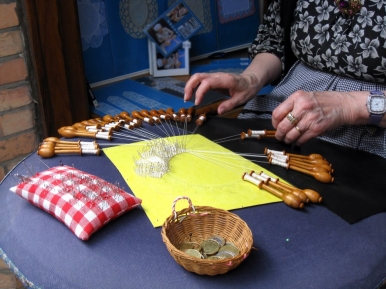
Belgium claims to be the lace capital of the world; in one shop, I see a woman making it the traditional way, winding thread on wooden bobbins and twisting it around pins, the pattern laid out on her workshop like a giant white spider web. The process is extremely time-consuming, so the delicate result is expensive, though factory-made lace is also sold throughout the country.
While most European cities are well equipped for a bar crawl, in Bruges, food-and-drink aficionados can also go on a museum crawl.
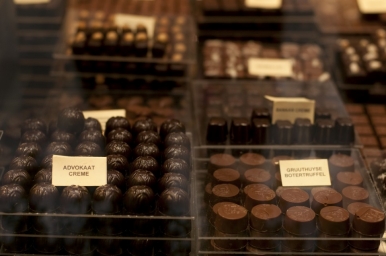
Munching on complimentary chocolates handed out at the entrance of the Choco-Story Museum (choco-story.be/ENG), I learn about the ancient Mexican world of the Mayas and the Aztecs, the history of chocolate in Europe, its place in culture, and how it was originally just a treat for the wealthy. The museum details the transition from cocoa to chocolate, illustrating how complicated it is to make this luscious delicacy.

The amusing Frietmuseum (frietmuseum.be/en), the only one in the world dedicated to Belgian fries, outlines the history of the tuber and explains health facts. The entertaining museum offers serious scientific and historical information for adults, plus comical illustrations for kids. It is thorough and fun, convincing me to eat more potatoes.
In the atmospheric basement café with a vaulted ceiling and white brick walls, chips are served, not just with ketchup or mayonnaise but an assortment of sauces, including aioli, mammoet, curry ketchup, tartare and banzai. The chips with andalouse (mayonnaise, tomato puree and peppers) are among the finest Belgian – or French – fries I have ever tasted.
Sightseeing is thirsty work, so I go from spuds to suds, ending my day with a tour of the Half Moon (De Halve Maan) brewery and museum (halvemaan.be). Joining a dozen international students, I follow the guide, who with dry, deadpan humour informs us that with hops, people get “hoppy” (or happy).
The tour leads up steep metal steps to an open roof where we get a better view of the city than from the belfry. Finally, with frothy beer in hand, I settle in a leather chair in a snug corner of the brewery restaurant, with piles of firewood along the wall, a fireplace and a large window overlooking the canal.
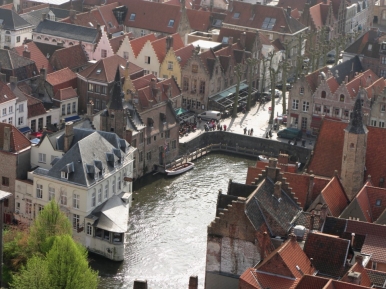
Along with its rich history and artistic heritage, Bruges also has a light, quirky side; for centuries, other Belgians have known locals here as ‘Bruges Fools.’
The only local beer, Zot (for fool), has a logo of a grinning court jester, which reminds me of the story behind the ‘Bruges Fools’ moniker. Emperor Maximilian of Austria, at the end of the 15th century, said that Bruges people were all fools and that ‘Bruges is a madhouse.’ But to name their beer that, they might be fools with a wicked sense of humour.





